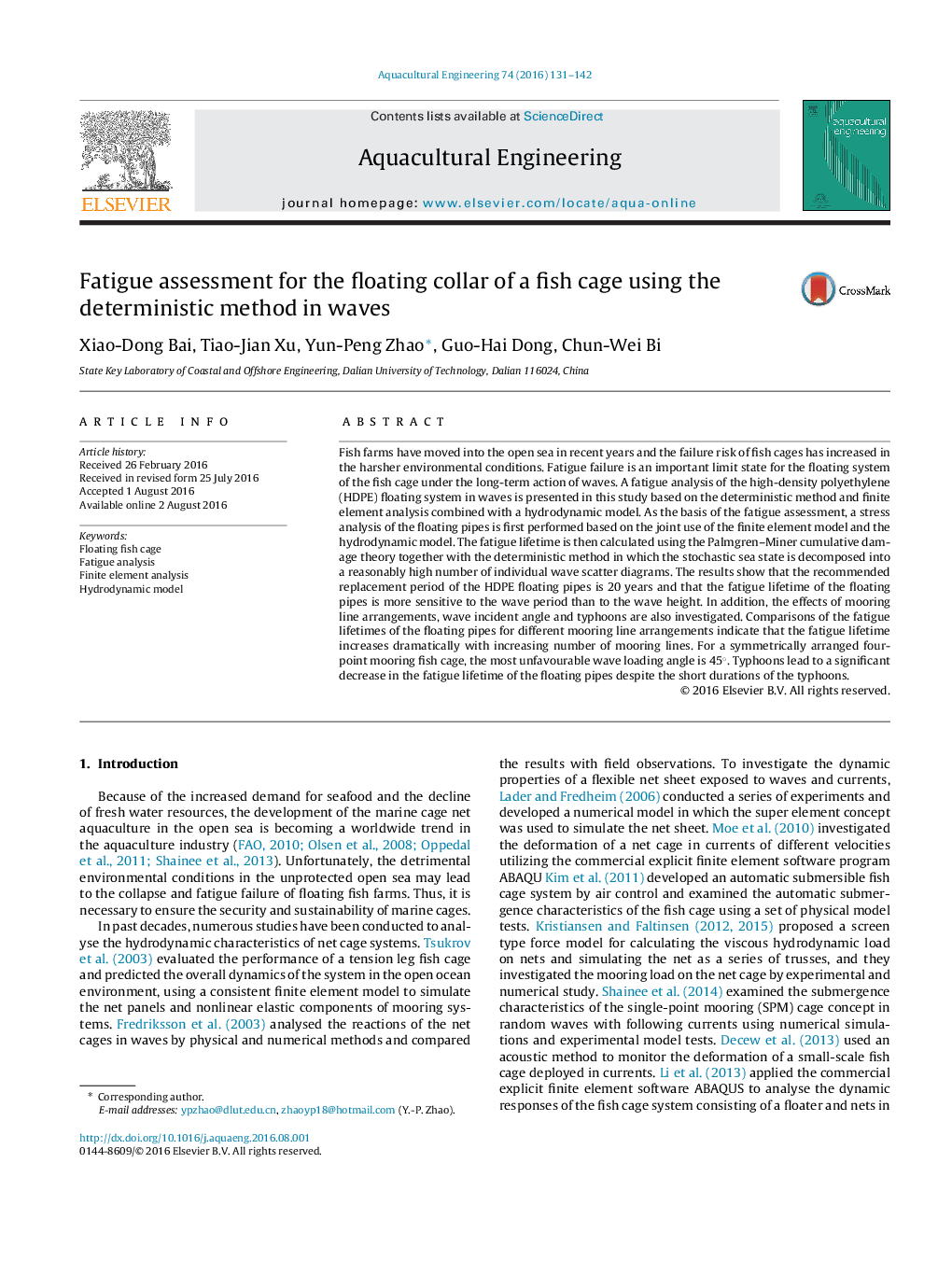| Article ID | Journal | Published Year | Pages | File Type |
|---|---|---|---|---|
| 6381252 | Aquacultural Engineering | 2016 | 12 Pages |
Abstract
Fish farms have moved into the open sea in recent years and the failure risk of fish cages has increased in the harsher environmental conditions. Fatigue failure is an important limit state for the floating system of the fish cage under the long-term action of waves. A fatigue analysis of the high-density polyethylene (HDPE) floating system in waves is presented in this study based on the deterministic method and finite element analysis combined with a hydrodynamic model. As the basis of the fatigue assessment, a stress analysis of the floating pipes is first performed based on the joint use of the finite element model and the hydrodynamic model. The fatigue lifetime is then calculated using the Palmgren-Miner cumulative damage theory together with the deterministic method in which the stochastic sea state is decomposed into a reasonably high number of individual wave scatter diagrams. The results show that the recommended replacement period of the HDPE floating pipes is 20 years and that the fatigue lifetime of the floating pipes is more sensitive to the wave period than to the wave height. In addition, the effects of mooring line arrangements, wave incident angle and typhoons are also investigated. Comparisons of the fatigue lifetimes of the floating pipes for different mooring line arrangements indicate that the fatigue lifetime increases dramatically with increasing number of mooring lines. For a symmetrically arranged four-point mooring fish cage, the most unfavourable wave loading angle is 45°. Typhoons lead to a significant decrease in the fatigue lifetime of the floating pipes despite the short durations of the typhoons.
Related Topics
Life Sciences
Agricultural and Biological Sciences
Aquatic Science
Authors
Xiao-Dong Bai, Tiao-Jian Xu, Yun-Peng Zhao, Guo-Hai Dong, Chun-Wei Bi,
